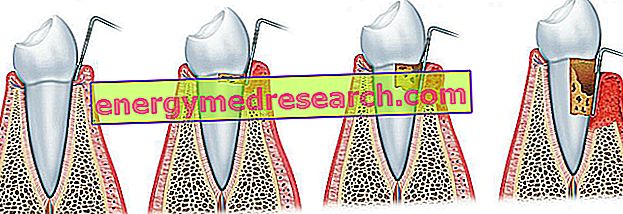Generality
The anamnesis, or clinical history, is a very important piece in the path of identification of a not yet specified morbid condition. Basically, the anamnesis consists in the collection and careful analysis of the disorders reported by the patient or his family members; all this with the aim of enriching the framework of information necessary for a definitive diagnosis.

The anamnesis basically consists of a questionnaire, which can be divided into 3 parts or stages:
- the part dedicated to the patient's general information;
- the part dedicated to the so-called family history;
- the part dedicated to the so-called personal medical history.
What is the medical history?
The medical history, or clinical history, is the critical collection and study of the symptoms and facts of medical interest reported by the patient or his family members. This investigation is carried out with the aim of enriching the framework of useful information for a correct diagnosis of the present morbid condition.
In a diagnostic pathway, the anamnesis represents an important piece for the identification and precise description of the pathological state in progress.
Sometimes, the clinical history is sufficient for a definitive diagnosis; other times, instead, it only leads to approximate conclusions. In many cases, it delimits a survey program, in the sense that it clarifies which in-depth examinations have a certain type of value and which, on the contrary, are not very significant.
- Headaches
- Psychological diseases
- Mental illnesses
WHAT IS NOT?
The anamnesis is not a mere registration and listing of the facts reported by the patient or relatives.
The doctor, in fact, must carefully examine every data collected, according to his own experience and his own preparation (critical study).
WHO DOES IT DO IT?
Generally, a medical history is entirely up to you.
However, it should be noted that any qualified medical assistant has all the skills and knowledge to accurately and accurately collect useful information reported by the patient or relatives.
ETEROANAMNESI
The medical history that the doctor carries out through the voice of relatives is also known as hetero-anamnesis .
The prefix "hetero" derives from the Greek word " heteros " ( ἕτερος ), which means "other" or "different".
The practice of hetero-anamnesis occurs when the patient:
- he is a small or very small child, unable to speak;
- he is an elder who has lost the ability to communicate clearly;
- has some mental disorder;
- for various reasons, it appears unclear in the exposition of the symptomatology;
- is in a state of coma or is unconscious;
- etc.
Investigation themes
Generally, the medical history consists of a questionnaire, that is a series of questions.
This series of questions follows a path with 3 main stages, which "touch" various themes and topics:
Step 1 - General information
It consists of collecting the patient's personal data, ie name, age, place of birth, place of residence, work, etc.
Step 2 - Family history
It is the investigation of the illnesses suffered and the possible causes of death of relatives, in particular the closest relatives such as paternal and maternal grandparents, parents and / or brothers.
This part of the anamnesis is very useful to clarify whether a particular condition has a hereditary nature or not and, if it did, to establish the transmission methods.
The finding of some hereditary pathologies motivates the prescription of genetic tests: these serve to identify with precision the site of the genetic mutation and to outline the type of condition in place.
Family anamnesis is particularly important in cases of: diabetes, obesity, endocrine diseases, abnormalities of the genital system, gout, hypertension, cardio-vascular diseases, kidney diseases, allergic diseases, headaches, haemorrhagic diseases, jaundice, myopathies, etc.
Stages 3 - Personal history
It includes 3 sub-caps: the physiological history, the remote pathological history and the next pathological history.
Physiological history
It consists of questions related to: somatic growth (ie the body), the daily life environment, life habits and physiological functions, all from birth to the present moment.
Briefly, the study of somatic growth sheds light on: the conditions at birth (type of birth, body weight after giving birth, etc.), breastfeeding, teething, walking, puberty, the menstrual cycle (in the case of women) etc.
The survey on the everyday life environment instead clarifies the working or school conditions; that on the habit of life shows whether the patient uses or abuses alcohol, smokes, takes drugs, etc .; the investigation on physiological functions defines the type of diet, the characteristics of sleep, the frequency of urination, the regularity of the alvus etc.
Remote pathological history
It is the investigation into the diseases and disorders that have affected the patient in the past (for example, childhood diseases, but also allergic manifestations).
In this phase of the anamnesis, it is the duty of the doctors to investigate also: any previous hospital admissions, any past surgical operations and any medical examinations or laboratory tests carried out previously.
The remote pathological anamnesis is important because it could detect the presence of a link between the condition in place at the present time and the past one.
Next pathological history
It consists of questions related to the current illness. In fact, it is also known as a medical history of the current disease.
It involves an accurate investigation of the disorders, since the latter began when the patient decided to contact the doctor for further study.
In general, once the patient has exposed his / her problems, the doctor focuses his or her attention on these and on the anatomical areas that they are interested in.
The modalities with which to carry out the next pathological anamnesis depend on the previous stages of anamnesis.



